SUMMARY HIGHLIGHTS
- Doing a temple stay on Mt Koya is one of the most memorable and impactful things you can do in Japan.
- Koyasan is especially beautiful in winter.
- The Koyasan World Heritage Ticket is a no-brainer.
I could hear the chanting from outside. I wanted to join in on as many meditation sessions as I could so I slipped off my snow-covered Campers and quietly entered Kondo Hall.
To the right of the sliding door was a group of caucasian tourists seated on the tatami floor. To the left, a pair of locals was observing from a bench. I ducked my head and took a seat on the far end of the bench.
I didn’t count but there must have been at least ten monks chanting in unison around the hall’s central altar. Photography isn’t allowed inside Buddhist temples but a Japanese photographer was squatting and taking pictures just outside the inner sanctum’s wooden barrier. That gave me the green light to move as close as I could to the naijin and sit on the floor. I closed my eyes and listened.
I wasn’t expecting it but the experience made me emotional. In the last two years, I’ve overcome serious challenges in my life. Filled with a deep sense of gratitude, the beauty and spirituality of Mt Koya – punctuated by the sound of monks chanting – moved me to tears.
Such is the power of places like this. I was barely two hours into my time in Koyasan and it was already one of the most impactful experiences I’ve had in Japan.
VISIT KOYASAN QUICK LINKS
To help you plan your trip to Koyasan, I’ve put together links to recommended hotels, tours, and other travel-related services here.
SHUKUBO
Recommendations for temple lodging on Mount Koya
EXPERIENCES
OTHER SERVICES
- Travel Insurance (non-US residents get 5% off)
- Koyasan World Heritage Ticket
- Kansai Railway Pass
- Japan Rail Pass
- Japan eSIM
GUIDE TABLE OF CONTENTS
KOYASAN AT A GLANCE
Hidden in the mountains of Wakayama Prefecture, Koyasan (Mount Koya) is one of Japan’s most sacred destinations. It’s the center of Shingon Buddhism, an important Buddhist sect introduced to Japan in the early 9th century by Kobo Daishi (aka Kukai)[1].
Through the centuries, Koyasan has remained a secluded monastic town nestled in a forest of towering cedar trees. Inscribed as a UNESCO World Heritage Site in 2004, it’s home to over a hundred temples where monks still carry out centuries-old practices in quiet devotion.
Located less than two hours south of Osaka, you can easily visit Koyasan on a day trip but one of the most memorable things you can do there is to stay overnight at a shukubo (temple lodging). You’ll have the opportunity to enjoy shojin ryori (vegetarian Buddhist cuisine), join monks in meditation, and experience a slower, more reflective pace of life.
WHAT IS THE KOYASAN WORLD HERITAGE TICKET?
The Koyasan World Heritage Ticket is a rail pass that provides one roundtrip journey between Osaka (or Wakayama) and Koyasan. It also offers unlimited use of local Koyasan buses and entitles you to discounts at select tourist attractions, shops, and restaurants for two consecutive calendar days.
Here’s the pricing structure for the Koyasan World Heritage Ticket (April 2025). Tap on the link for an in-depth analysis of the pass.
| Digital Ticket | Physical Ticket | |
| Regular Version (from Namba Station) | JPY 3,140 | JPY 3,540 |
| Limited Express Version (from Namba Station) | JPY 3,690 | JPY 4,090 |
Most visitors will be coming from central Osaka so the following map* shows the route you’ll take from Namba Station.
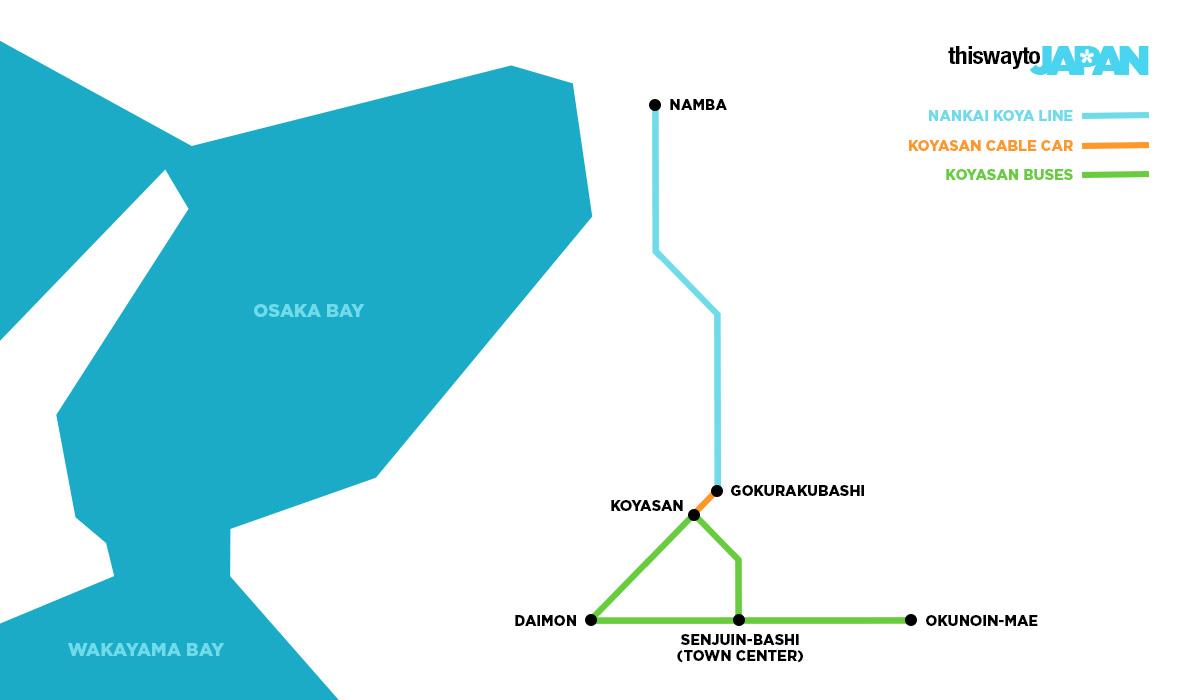
*Please note that the map above is a simplified version to help you visualize the route.
BEST TIME TO VISIT MOUNT KOYA
As beautiful as Mount Koya is, its appeal is largely centered around temple life so there really is no bad time to visit. However, like many destinations in Japan, spring and fall are popular thanks to temperate weather and the promise of cherry blossoms and autumn leaves.
Having said that, I went in mid-March, at the tail end of winter, and caught what may have been the final snowstorm of the season. It blanketed Koyasan in several inches of snow and created an incredibly peaceful and otherworldly atmosphere. There were also few tourists at that time, making my visit even more special.
TEMPLE LODGING IN KOYASAN
A shukubo is a Buddhist temple that allows pilgrims and tourists to stay the night. They offer simple but comfortable Japanese-style lodging with shared bathrooms and gender-separated baths.
On an overnight stay, two vegetarian meals are usually provided – dinner on the day of check-in and breakfast the following morning. Depending on the shukubo, guests are welcome to join various temple activities like mediation sessions, morning prayer, and rituals.
I stayed at Komyoin and couldn’t have been happier with my choice. This was my room before the staff prepared my bed.
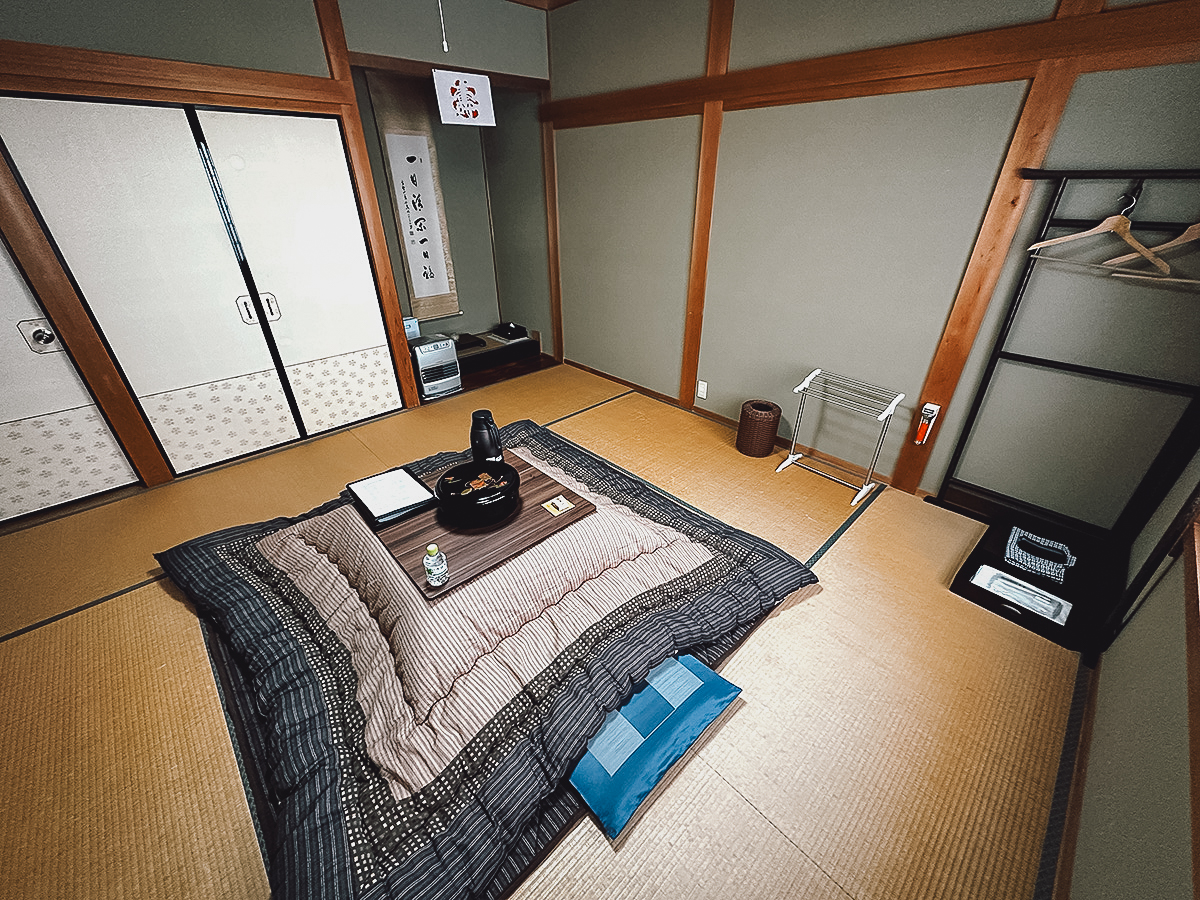
You can easily book a shukubo stay in Koyasan on Booking.com. I haven’t used it but you can also make a booking through the Koyasan Shukubo Association’s website.
Here are a few highly-rated options for temple lodging in Koyasan:
THINGS TO DO IN KOYASAN
Stay at a Temple
Koyasan is interesting enough to visit on a day trip from Osaka, but in my opinion, staying overnight at a shukubo is one of the most memorable things you can do in Japan. It offers guests the rare opportunity to detach, spiritually connect, and experience a monk’s reflective life from up close.
As advised, I did my shukubo stay at Komyoin. I enjoyed two delicious shojin ryori meals and participated in two meditation sessions. Best of all was the goma fire ritual (pictured below). We were asked to write our wishes down on prayer sticks, which were then burned to symbolically purify and transmit our prayers to the deities.
There are over fifty temples[2] in Koyasan that offer lodging, some of which you can book through Booking.com. Reservations can also be made through the Koyasan Shukubo Association’s website.
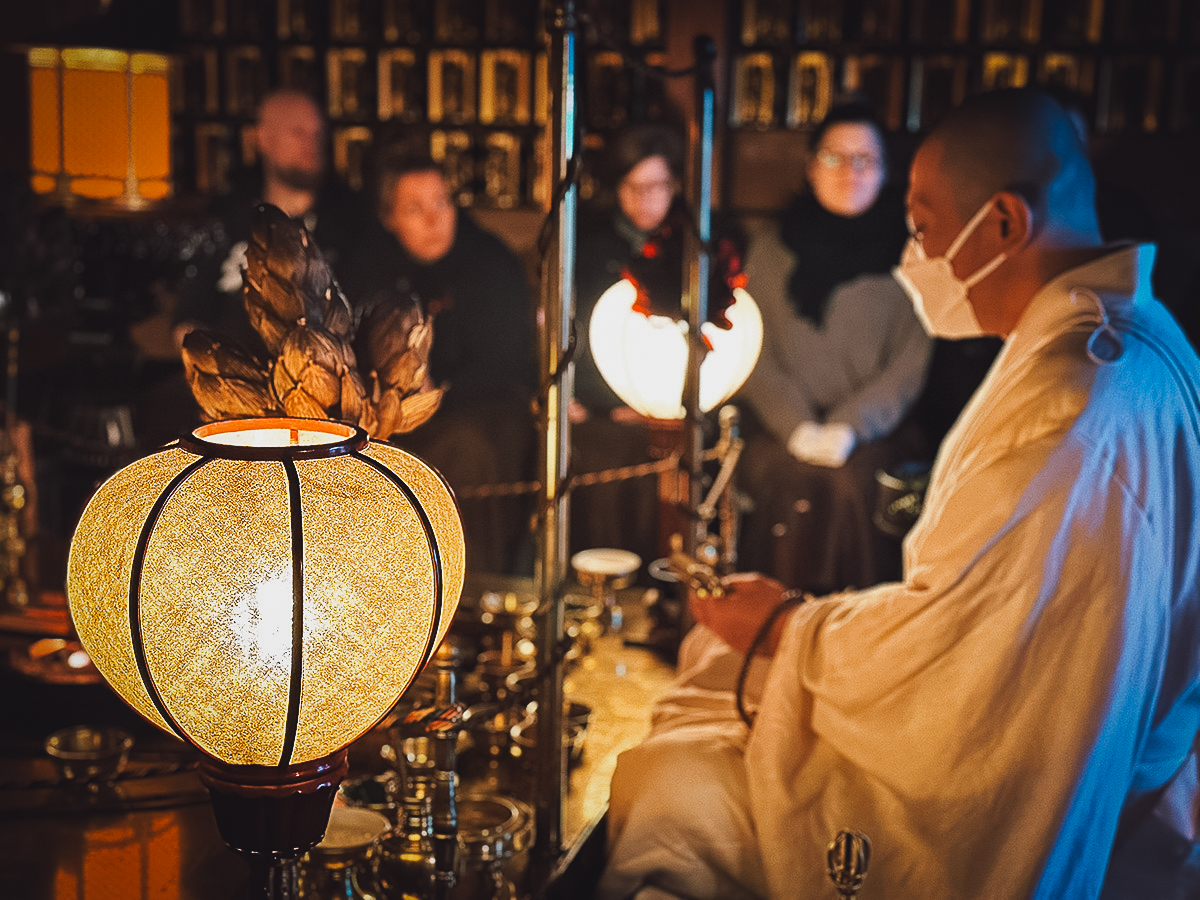
Walk to Okunoin and the Mausoleum of Kobo Daishi
Aside from the in-temple activities, another thing I loved about Komyoin was its proximity to the atmospheric path leading you to Okunoin and Kobo Daishi’s mausoleum. You’ll walk through roughly 2 kms (1.2 miles) of ancient gravestones and towering cedar trees before reaching the temple and mausoleum.
The trail is beautiful at any time of the year, but as you can see below, it’s especially breathtaking when coated in a pristine blanket of snow. Perfectly still with just the sound of fresh powder crunching under my feet, this was one of the most magical moments I’ve ever had in my life.
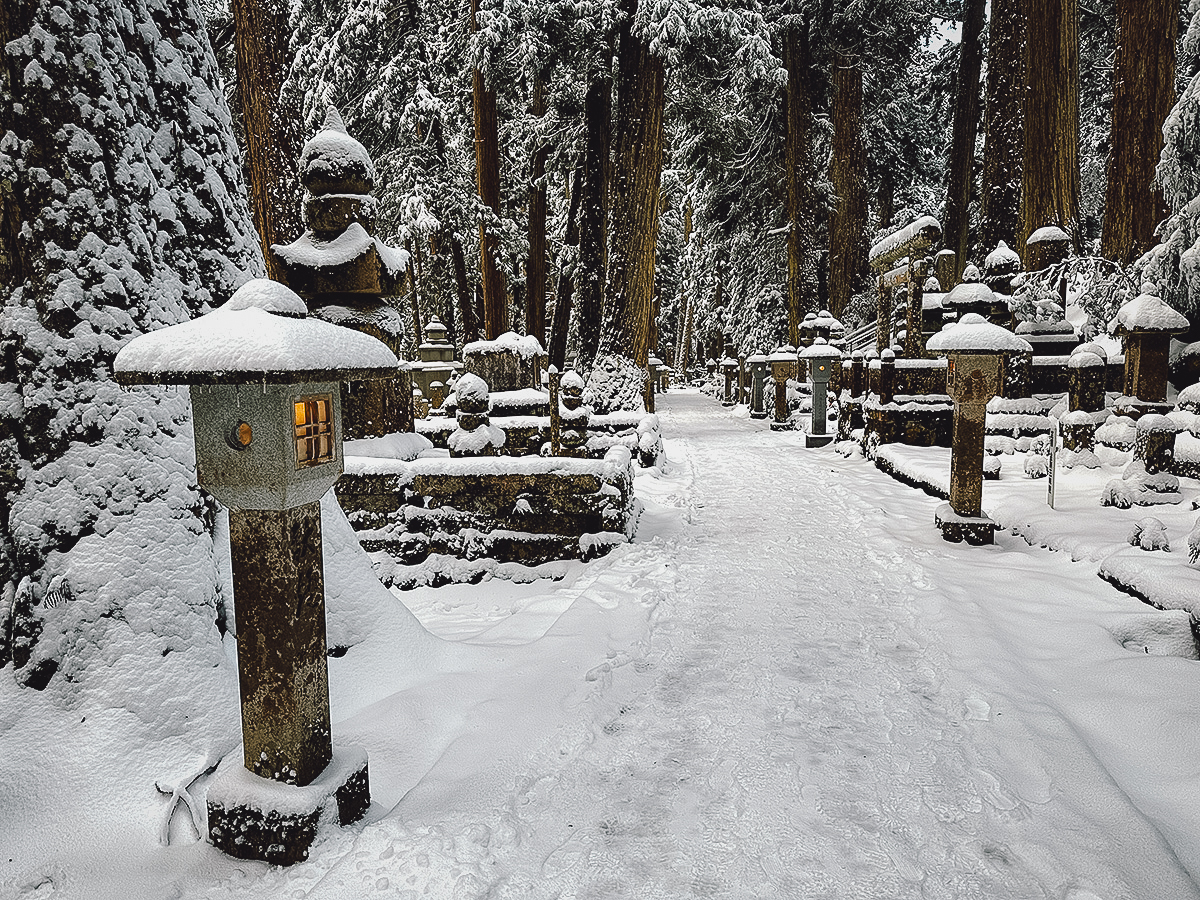
Visit Kongobu-ji and Danjo Garan
Apart from Okunoin, two of the most important religious buildings in Koyasan include Kongobu-ji and Danjo Garan. Kongobu-ji is the head temple of Shingon Buddhism while Danjo Garan is a temple complex that serves as a training ground and spiritual center for Shingon monks.
To be honest, I was feeling some temple fatigue (and shoe-removing fatigue) at this point so I wasn’t sure if I wanted to pay for admission into Kongobu-ji, but I’m happy I did. It was interesting to walk through the temple’s halls and see the many screen door paintings.
I couldn’t appreciate it because of the snow but Kongobu-ji is home to the Banryutei Rock Garden, the largest rock garden in Japan[3].
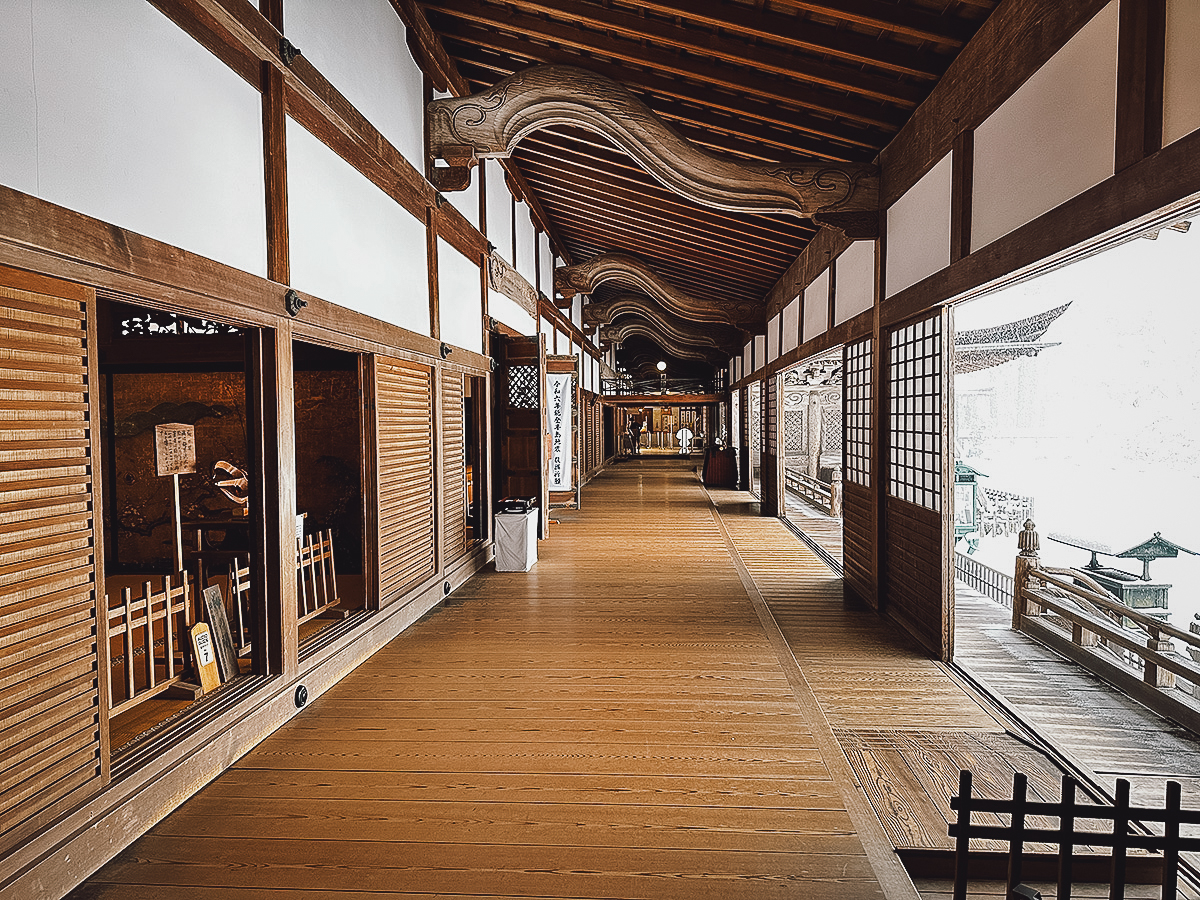
The Konpon Daito Pagoda in the Danjo Garan complex is arguably the most iconic and recognizable structrure in Koyasan.
Standing at 45 meters tall (147.6 ft), it’s an impressive sight in any season but especially in winter. Pictures don’t do it justice but the pagoda’s bright vermillion exterior appeared to glow against the stark black and white landscape.
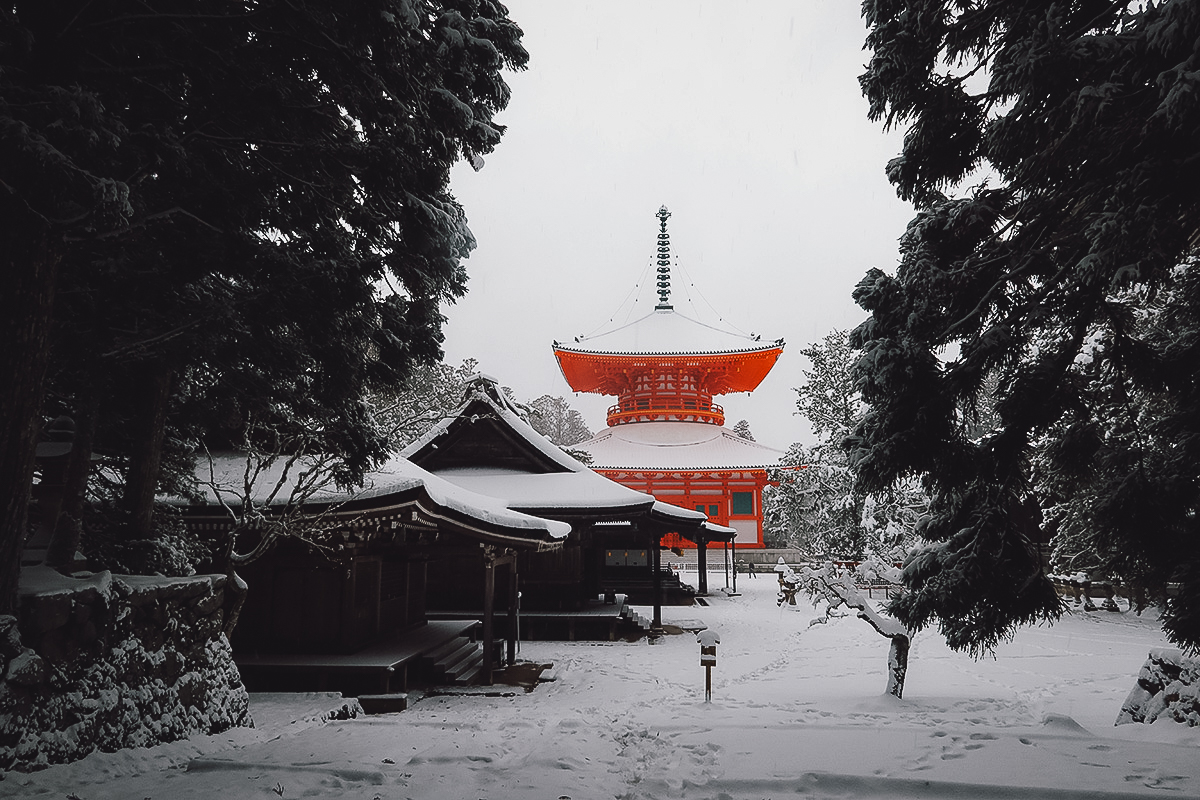
Hike Along a Pilgrimage Trail
I was lucky to experience snowfall in March but unfortunately, it kept me from doing something else I was excited about – going on a hike.
Being one of Japan’s most revered pilgrimage destinations, there are a handful of hiking trails you can take to enter Mount Koya. The 23.5 km long (14.6 miles) Koyasan Choishi Michi trail is the classic approach but I wanted to do something a little easier, something that already started in Koyasan.
A section of the Women Pilgrims Course takes you from Daimon Gate to the entrance of Okunoin. That section of the trail is roughly 5 km long (3.1 miles) and should take the average hiker less than two hours to complete[4].
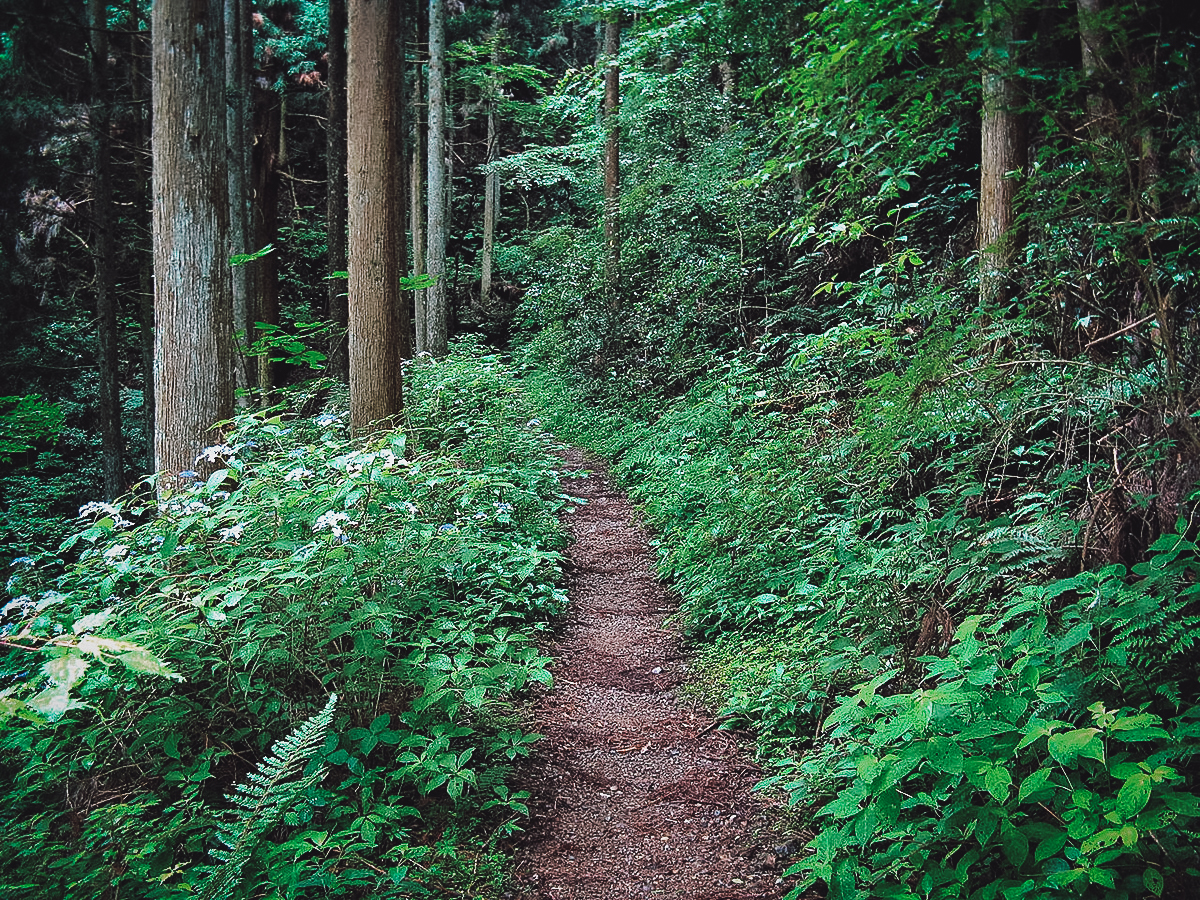
Photo by KENPEI, CC BY-SA 3.0, via Wikimedia Commons / Processed in Photoshop and Lightroom
Visit Reihokan Museum
I skipped this museum but anyone with a keen interest in religious art may want to visit the Reihokan Museum. It’s home to tens of thousands[5] of cultural and religious artifacts pertaining to Koyasan’s temples.
However, based on its Google reviews, non-Japanese visitors seem to be disappointed with the museum’s lack of English translations.
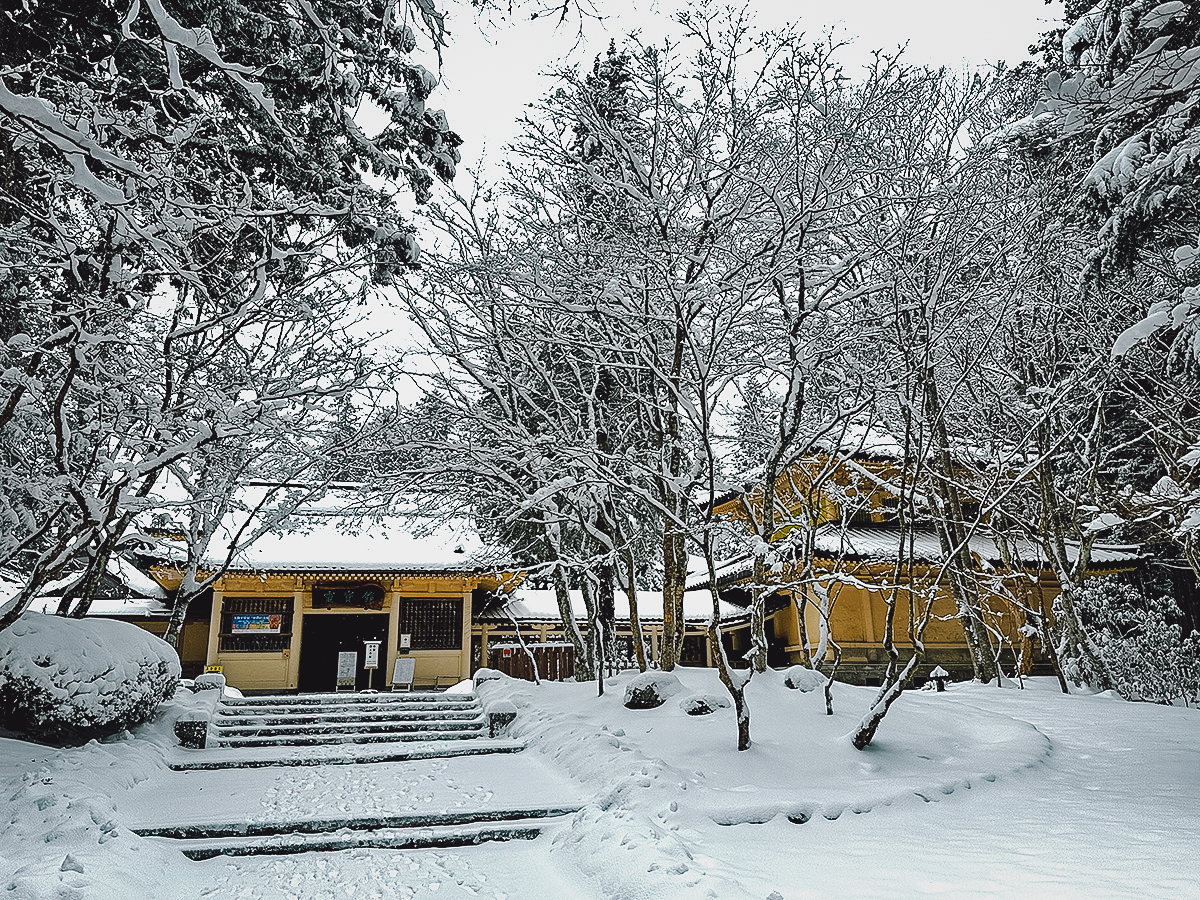
VISIT KOYASAN FAQs
Is Mt Koya worth visiting?
Yes, Mount Koya is a special place and worth visiting at most times of the year.
Should I do a temple stay in Koyasan?
Yes, absolutely. In my opinion, it’s one of the most memorable and unique things you can do in Japan.
Do I need to be a practicing Buddhist to stay at a temple?
No, you don’t. Anyone is welcome.
Is the Koyasan World Heritage Ticket worth it?
Yes, even if you plan on doing just a day trip from Osaka. Just the cost of roundtrip transportation alone will pay for the ticket.
However, it’s only valid for up to two (2) consecutive calendar days. If you plan on staying more than a night, then it’s probably not the right rail pass for you.
Can I use my JR Pass to travel to Koyasan?
No, because the JR Pass is only valid on JR trains. A key portion of the journey from Osaka to Koyasan is operated by Nankai Railway, which isn’t part of the Japan Rail (JR) group.
The closest you can get to Mt Koya using a JR Pass is Hashimoto Station via the Wakayama Line[6]. From there, you’ll need to pay for the Nankai train and cable car fare to Koyasan Station, or purchase a Koyasan World Heritage Ticket that covers travel between Hashimoto and Koyasan (regular | limited express).
Can I use my Kansai Railway Pass to travel to Koyasan?
Yes you can, but it doesn’t include travel on the local buses in Koyasan.
THE FINAL SAY
I’ve been fortunate to do many memorable things in Japan but doing a shukubo stay in Koyasan has been one of the most special. If you have even a passing interest in the spiritual, then it’s probably something you’ll want to experience too, no matter your religion (or lack thereof).
Disclosure
This Koyasan travel guide contains affiliate links, meaning we’ll earn a small commission if you make a booking at no additional cost to you. As always, we only recommend products and services that we’ve used ourselves and can personally vouch for. We appreciate your support as it helps us make more of these free travel guides. Arigato gozaimasu!
References
1. Payne, Richard (2010, September 13). Shingon, Oxford Bibliographies.
2. What is Koyasan, a World Heritage Site? A thorough breakdown of its diverse charms: highlights, history, shukubo temple lodgings, and more! The Official Wakayama Travel Guide. (2024, August 1).
3. Kongobuji Temple. japan-guide.com. (2025, February 21).
4. Koyasan Guidance: Walking Routes, Audio Guide & Tours. Koyasan.
5. Overview. Koyasan Reihokan Museum.
6. JR Line Route Map. JR西日本 West Japan Railway Company:トップページ. (current as of 2023, March 18).

